The Galaxy S22 Ultra is Samsung’s latest flagship and comes with multiple upgrades over its predecessor, like a built-in S pen and bigger sensors to improve night photography. It sports a 6.8″ display with an adaptive 120Hz refresh rate. Samsung says the new chipset, the Exynos 2200 (4 nm) in Europe, is its fastest ever. On the audio front, the device has two speakers producing “surround sound with Dolby Atmos technology.” Dolby Digital and Dolby Digital Plus are included. As for recording, S22 Ultra has Zoom-in MIC (Audio zoom), which Samsung describes as “an audio recording function that focuses on the direction of interest using a combination of 3 built-in MICs while video recording.”
We put the Samsung Galaxy S22 Ultra (Exynos) through our rigorous DXOMARK Audio test suite to measure its performance both at recording sound using its built-in microphones, and at playing audio back through its speakers.
In this review, we will break down how it fared in a variety of tests and several common use cases.
Overview
Key audio specifications include:
- Two speakers: Top front, bottom side firing
- Dolby Atmos tuning
- Enhanced Bluetooth connection
- No jack
Scoring
Sub-scores and attributes included in the calculations of the global score.
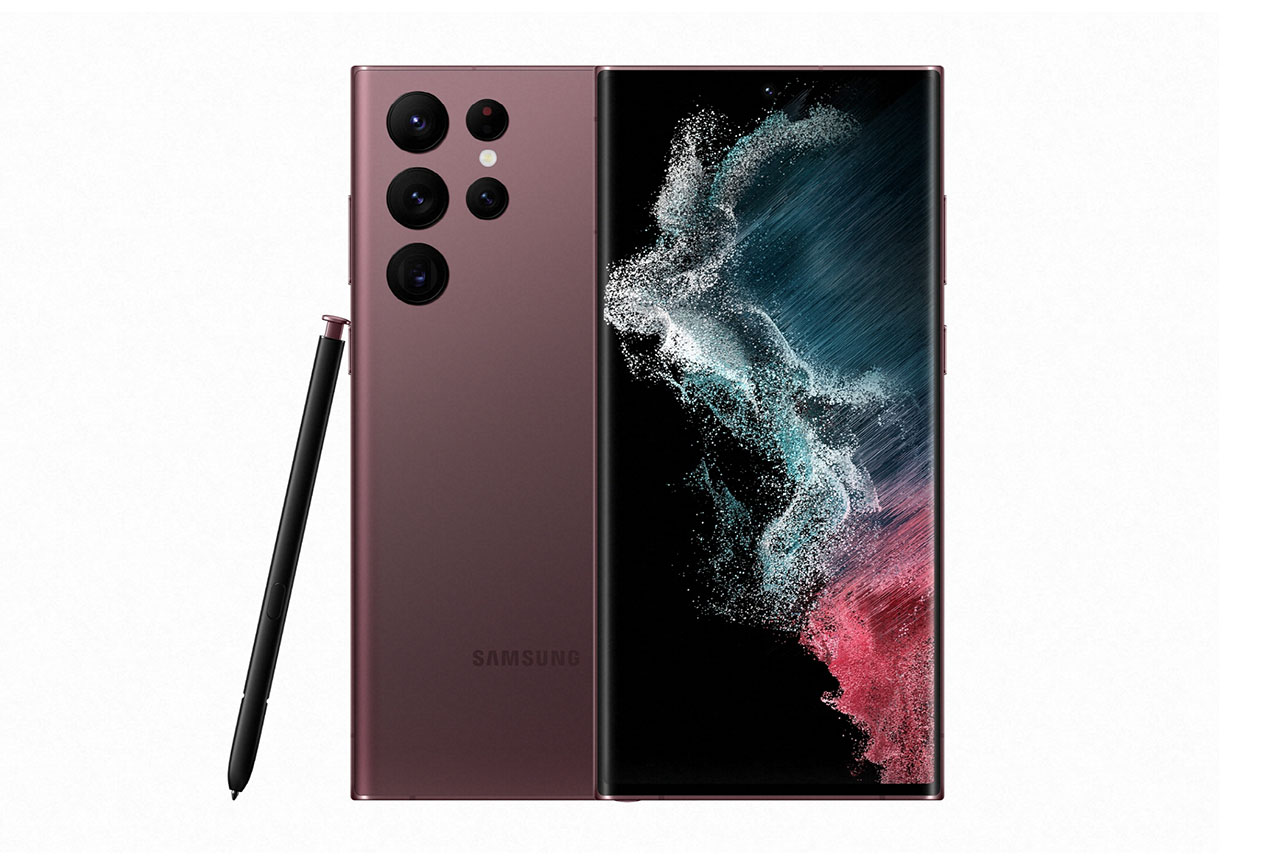
Samsung Galaxy S22 Ultra (Exynos)


 54th
54th 36th
36thPlayback
Pros
- Overall correct performance
- Mostly free of artifacts
- Maximum volume is loud enough
Recording
Cons
- Canny overall tonal balance
- Inaccurate envelope in Selfie Video use case
- Unrealistic Background due to its unnatural timbre
The Samsung Galaxy S22 Ultra (Exynos) performs on a similar level as other Ultra-Premium devices in our database, such as the Xiaomi Mi 11 Ultra, and the Google Pixel 6 Pro. For the most part, it placed in average territory in playback and was on par with other Galaxy smartphones. There were no glaring weaknesses — the smartphone is functional across use cases — but it only rises above average in the volume and artifacts attributes.
As a recording device, the S22 Ultra (Exynos) was a much stronger performer, especially in high sound pressure level scenarios, where it did an excellent job at capturing the dynamic range of the music with good tonal balance, pleasing midrange, clear treble, and a lot (maybe a little too much at times) bass. It also performed ably in more normal situations, capturing pleasing and accurate sound with good timbre, dynamics, and spatial attributes.
Test summary
About DXOMARK Audio tests: For scoring and analysis in our smartphone audio reviews, DXOMARK engineers perform a variety of objective tests and undertake more than 20 hours of perceptual evaluation under controlled lab conditions.
(For more details about our Playback protocol, click here; for more details about our Recording protocol, click here.)
The following section gathers key elements of our exhaustive tests and analyses performed in DXOMARK laboratories. Detailed performance evaluations under the form of reports are available upon request. Do not hesitate to contact us.
Playback
Samsung Galaxy S22 Ultra (Exynos)
163
DXOMARK engineers test playback through the smartphone speakers, whose performance is evaluated in our labs and in real-life conditions, using default apps and settings.
Listen to the tested smartphone’s playback performance in this comparison with some of its competitors:
Here is how the Samsung Galaxy S22 Ultra (Exynos) performs in playback use cases compared to its competitors:

Timbre
Samsung Galaxy S22 Ultra (Exynos)
158
The Timbre score represents how well a phone reproduces sound across the audible tonal range and takes into account bass, midrange, treble, tonal balance, and volume dependency. It is the most important attribute for playback.
The timbre performance slightly betters the Galaxy S21 Ultra 5G (Exynos) but it’s still well outside the top tier in this attribute.
The overall tonal balance demonstrates clear and fairly precise high-end extension and midrange, producing a good reproduction of voices. But the S22 Ultra suffers from a strong lack of low-end extension. At maximum volume, the device tends to sound aggressive.

Dynamics
Samsung Galaxy S22 Ultra (Exynos)
149
The Dynamics score measures the accuracy of changes in the energy level of sound sources, for example how precisely a bass note is reproduced or the impact sound from drums.
Dynamics performance is in average territory. The attack is slightly lacking in sharpness. Bass precision is thrown off by a shortfall of low-end; hence, the bass envelope is not accurately preserved. Punch is relatively weak, making the sound a bit flat and lacking a good dynamic range.



Spatial
Samsung Galaxy S22 Ultra (Exynos)
162
The S22 Ultra’s spatial score puts it in better company, closer to the top 10 in our Ultra-Premium category in this attribute. The sound stage is somewhat blurry, but localizability is still satisfactory — you can locate the sources of instruments correctly.
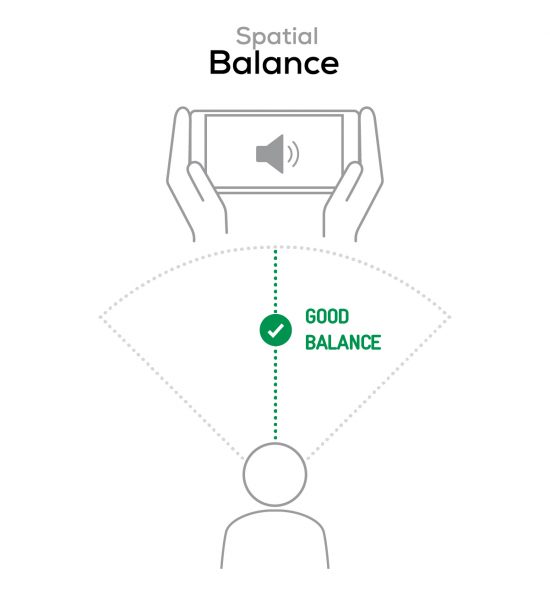
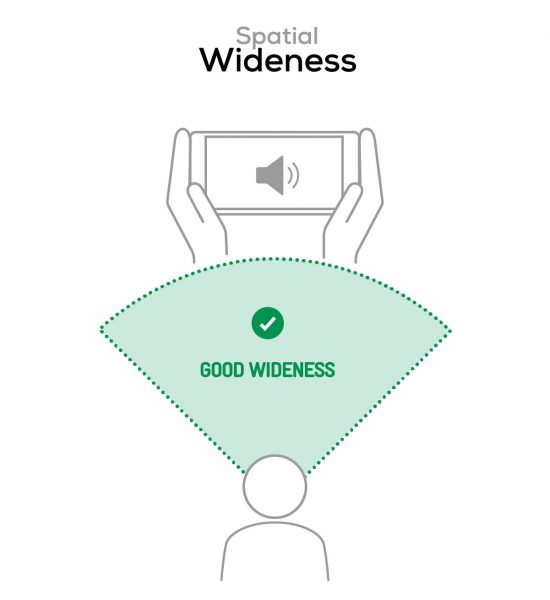
Balance is slightly inaccurate; elements that should be centered seem to be coming from different corners of the S22 Ultra. This shift would not be perceptible by every user, so it remains in acceptable territory here. The wideness performance is decent, and distance performance is good.

Volume
Samsung Galaxy S22 Ultra (Exynos)
162
The Volume score represents the overall loudness of a smartphone and how smoothly volume increases and decreases based on user input.
The Samsung Galaxy S22 Ultra (Exynos) performs well in the volume attribute, with an above-average score. The maximum volume is good in comparison with other devices.
Here are a few sound pressure levels (SPL) measured when playing our sample recordings of hip-hop and classical music at maximum volume:
| Hip-Hop | Classical | |
| Samsung Galaxy S22 Ultra (Exynos) | 74.1 dBA | 70.2 dBA |
| Apple iPhone 13 Pro Max | 72.4 dBA | 69.5 dBA |
| Google Pixel 6 Pro | 73 dBA | 69 dBA |
The minimum volume step is not well-tuned — certain highly dynamic contents (like classical music) are not intelligible.
The following graph shows the gradual changes in volume going from minimum to maximum. We expect these changes to be consistent across the range, so that all volume steps correspond to users’ expectations:

Artifacts
Samsung Galaxy S22 Ultra (Exynos)
157
The Artifacts score measures the extent to which the sound is affected by various types of distortion. The higher the score, the less the disturbances in the sound are noticeable. Distortion can occur because of sound processing in the device and because of the quality of the speakers.
The S22 Ultra had a strong showing in the artifacts attribute, with very few artifacts discernible at all. On synthetic signals used in testing, there were some granular noises and overshoots. At loud volumes, bass distortion emerges. Some static hissing was also noted on certain contents.


It represents the distortion and noise of the device playing our test signal (0 dB Fs, Sweep Sine in an anechoic box at 40 cm) at the device's maximum volume.
Recording
Samsung Galaxy S22 Ultra (Exynos)
160
DXOMARK engineers test recording by evaluating the recorded files on reference audio equipment. Those recordings are done in our labs and in real-life conditions, using default apps and settings.
Here is how the Samsung Galaxy S22 Ultra (Exynos) performs in recording use cases compared to its competitors:

Timbre
Samsung Galaxy S22 Ultra (Exynos)
147
The Timbre score represents how well a phone captures sounds across the audible tonal range and takes into account bass, midrange, treble, and tonal balance. It is the most important attribute for recording.
The Samsung Galaxy S22 Ultra (Exynos) was excellent in the timbre category. Moreover, it was exceptional in recording in the electronic music concert use case, where high sound pressure levels (SPL) often stymie other devices. In such high SPL scenarios, the tonal balance produced by the Samsung device is superb, with bright treble rendition, full and natural midrange, and powerful (if a bit intrusive) bass.
In regular environments, the performance is still quite good in both life video and selfie video modes; tonal balance is well rendered except for a slight lack of extra brightness and high-end extension, as well as clarity in the high midrange. In memo mode, tonal balance is impaired by a lack of treble and sounds more muffled. In this use case, the overall sound is pretty canny.

Dynamics
Samsung Galaxy S22 Ultra (Exynos)
146
The Dynamics score measures the accuracy of changes in the energy level of sound sources, for example how precisely a voice's plosives (the p's, t's and k's, for example) are reproduced. The score also considers the Signal-to-Noise Ratio (SNR), for example how loud the main voice is compared to the background noise.
The Samsung Galaxy S22 Ultra (Exynos) had a strong performance in recording dynamics. The signal-to-noise ratio (SNR) was very good across use cases, and background is well attenuated. In life video mode and the memo app, envelope is accurate, with sharp attack and precise plosives. In selfie video mode, however, envelope is impaired by a lack of sharpness and attack is more rounded.

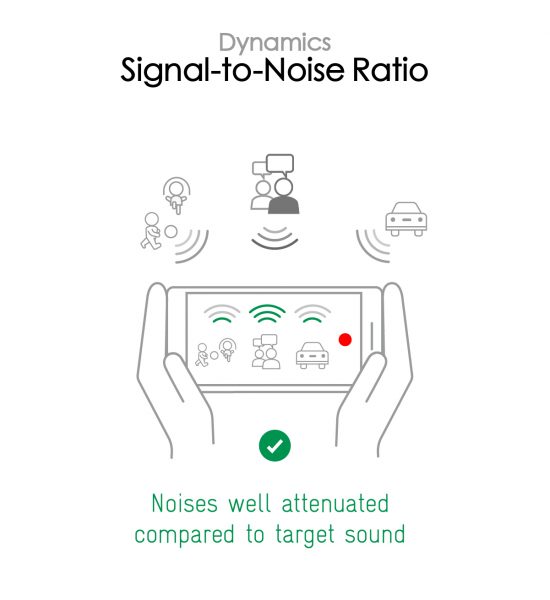
At high SPL, dynamics performance is strong but a bit unrealistic; attack seems somewhat rounded and bass is pretty imprecise, rendering a pretty blurry envelope.

Spatial
Samsung Galaxy S22 Ultra (Exynos)
159
The sub-attributes for spatial tests include pinpointing a specific sound's location, its positional balance, distance, and wideness on the recorded audio files.
The S22 Ultra delivers a solid spatial performance as a recording device. Sources are precisely reproduced in the audio scene, delivering accurate localizability. Wideness is great, creating a very realistic stereo rendering, even in selfie video, where despite being held in portrait mode, the device delivers good wideness. Distance performance is impaired by the unnatural midrange, which tends to push voices further away, but still seems fairly realistic.

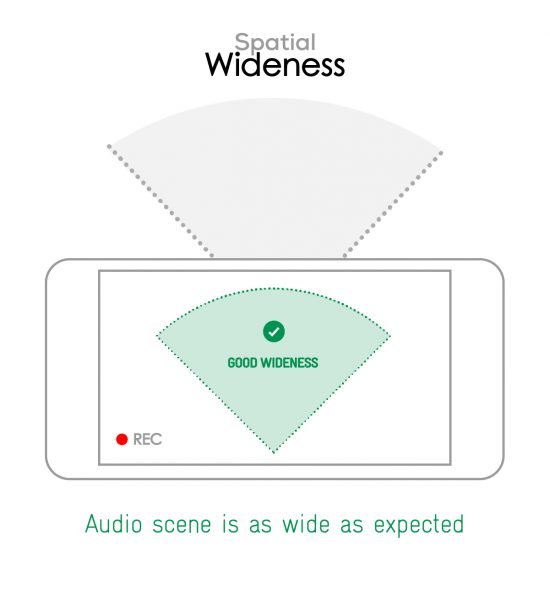

Volume
Samsung Galaxy S22 Ultra (Exynos)
170
The Volume score represents how loud audio is normalized on the recorded files and the how the device handles loud environments, such as electronic concerts, when recording.
The S22 Ultra delivered an average performance in the volume attribute. Recording loudness was good in all use cases. As in some other recording attributes, the capacity for recording in high SPL environments was excellent, showing nearly no distortion at all.
Here are the sound levels recorded in the audio and video files, measured in LUFS (Loudness Unit Full Scale); as a reference, we expect loudness levels to be above -24 LUFS for recorded content:
| Meeting | Life Video | Selfie Video | Memo | |
| Samsung Galaxy S22 Ultra (Exynos) | -28.8 LUFS | -21.7 LUFS | -21.2 LUFS | -23.9 LUFS |
| Apple iPhone 13 Pro Max | -25.5 LUFS | -22.7 LUFS | -20.1 LUFS | -18.2 LUFS |
| Google Pixel 6 Pro | -27.5 LUFS | -19.6 LUFS | -17.6 LUFS | -20 LUFS |
The Artifacts score measures the extent to which the recorded sounds are affected by various types of distortions. The higher the score, the less the disturbances in the sound are noticeable. Distortions can occur because of sound processing in the device and the quality of the microphones, as well as user handling, such as how the phone is held.
Very few artifacts were observed overall. Slight distortion was observed on shouting voices. The handset was also mostly exempt from microphone occlusion artifacts.
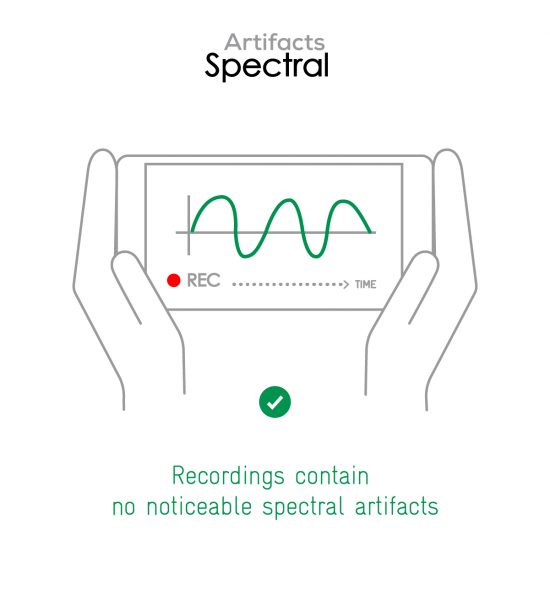
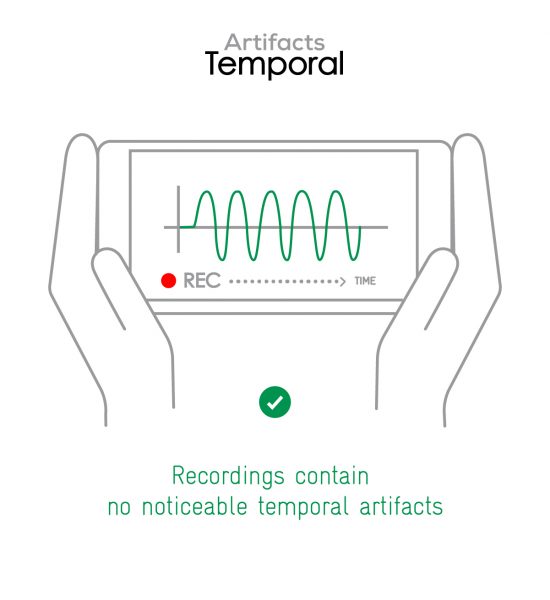
In addition, the Galaxy S22 Ultra does well at reducing wind noise. It is handled well in life video and memo recording use cases, and, depending on wind direction, even better when recording video or selfie video. Overall, even strong winds do not impair the intelligibility of voice recordings.
In this audio comparison, you can listen to the way this smartphone handles wind noise relative to its competitors:

Background
Samsung Galaxy S22 Ultra (Exynos)
166
Background evaluates how natural the various sounds around a voice blend into the video recording file. For example, when recording a speech at an event, the background should not interfere with the main voice, yet it should provide some context of the surroundings.
The background performance was middling. Background was a bit unrealistic because of a slightly unnatural tonal balance. Sound is midrange focused and canny. No artifacts were observed, however.

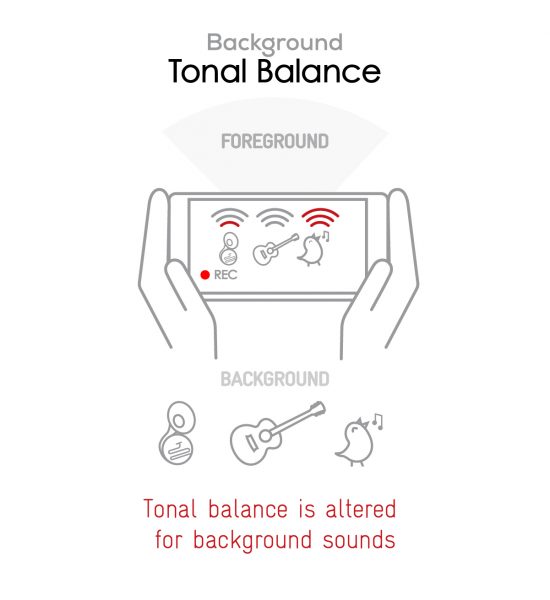


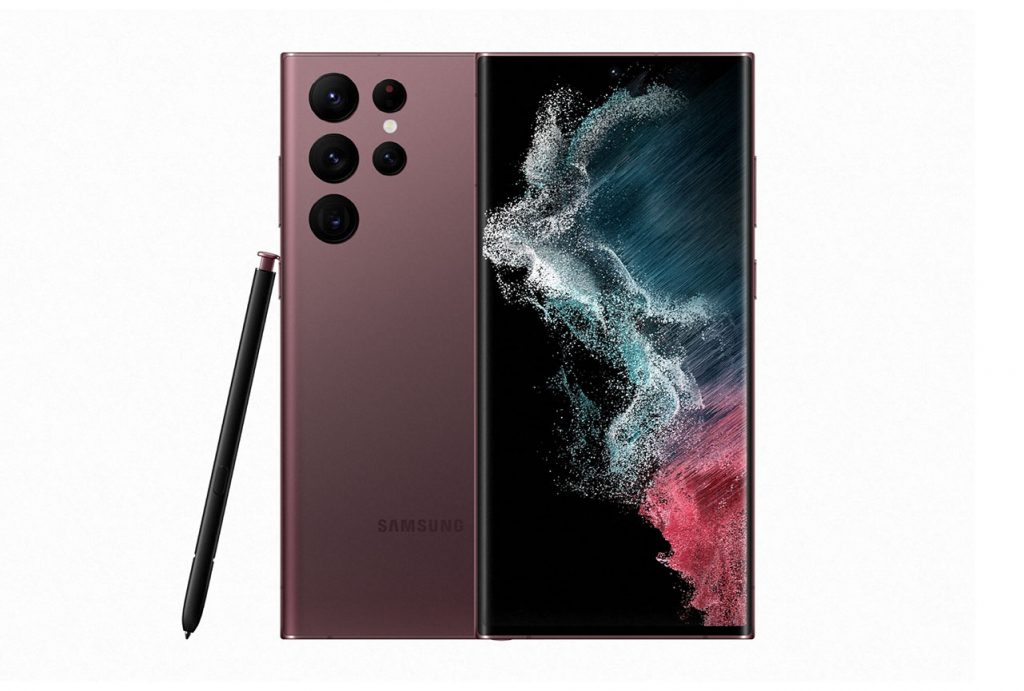

DXOMARK encourages its readers to share comments on the articles. To read or post comments, Disqus cookies are required. Change your Cookies Preferences and read more about our Comment Policy.